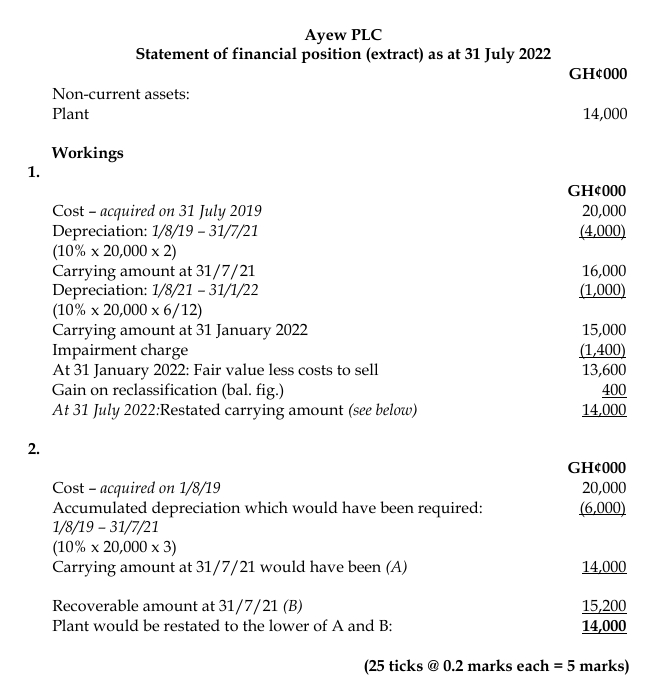- 5 Marks
Question
Explain with justification, whether each of the following could most likely be classified as a discontinued operation under IFRS 5: Non-current Assets Held for Sale and Discontinued Operations in this year’s financial statements:
i) A reportable operating segment that met the definition of held for sale after the year-end but before the financial statements were authorised for issue. (1 mark)
ii) A reportable operating segment that was closed down during the financial year. The assets of the segment were broken up and used in other divisions of the company. (2 marks)
iii) A division of a business, classified as held for sale, that was correctly treated as a discontinued operation in last year’s financial statements, but which has not been sold by this year-end due to the sale being referred to the National Insurance Commission, which regulates the insurance industry. The commission is not expected to report its findings until 6 months after this year-end. (2 marks)
Answer
i) Held for sale after year-end:
A reportable operating segment that meets the criteria for being classified as held for sale after the year-end, but before the financial statements are authorized for issue, would not qualify as a discontinued operation under IFRS 5. This is because the classification as “held for sale” occurred after the reporting date, making it a non-adjusting event under IAS 10 (Events After the Reporting Period). (1 mark)
ii) Operating segment closed down during the year:
A reportable operating segment that was closed down during the year and whose assets were broken up and used in other divisions would most likely be classified as a discontinued operation. The closing of the segment during the financial year represents a significant disposal, and even though the assets were redeployed within the company, the segment’s operations were effectively discontinued. Therefore, it meets the criteria for classification as a discontinued operation. (2 marks)
iii) Not sold within the 12-month period:
A division classified as held for sale in the prior year but not sold within 12 months does not automatically lose its discontinued operation classification. IFRS 5 allows an extension beyond 12 months if the delay is due to events beyond the entity’s control, such as regulatory requirements. In this case, the delay in the sale is due to the National Insurance Commission’s review, which is beyond the company’s control. Therefore, the division can continue to be classified as a discontinued operation. (2 marks)
- Tags: Discontinued Operations, Held for Sale, IFRS 5, Non-current Assets, Operating segments
- Level: Level 3
- Uploader: Theophilus


